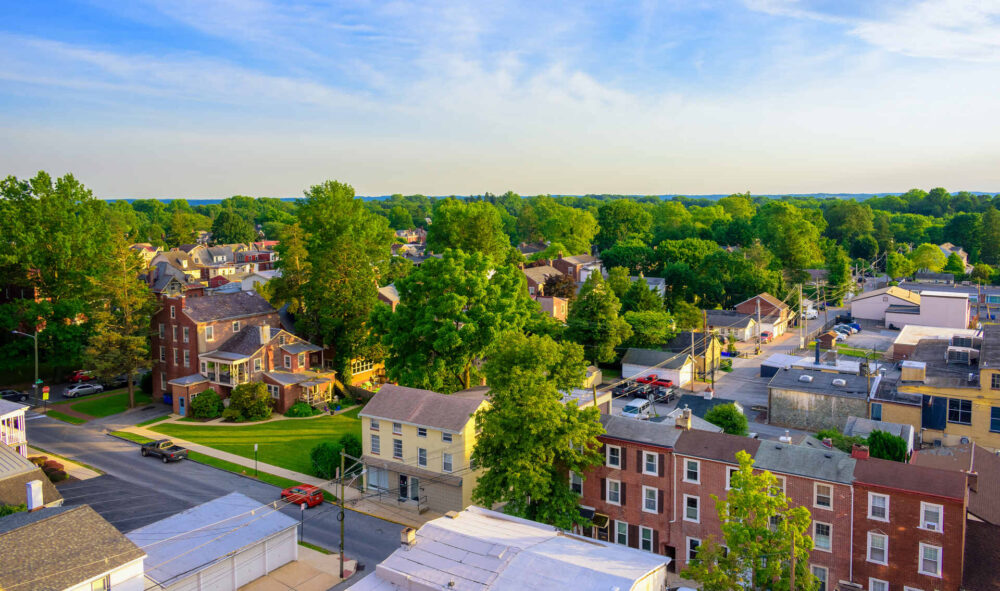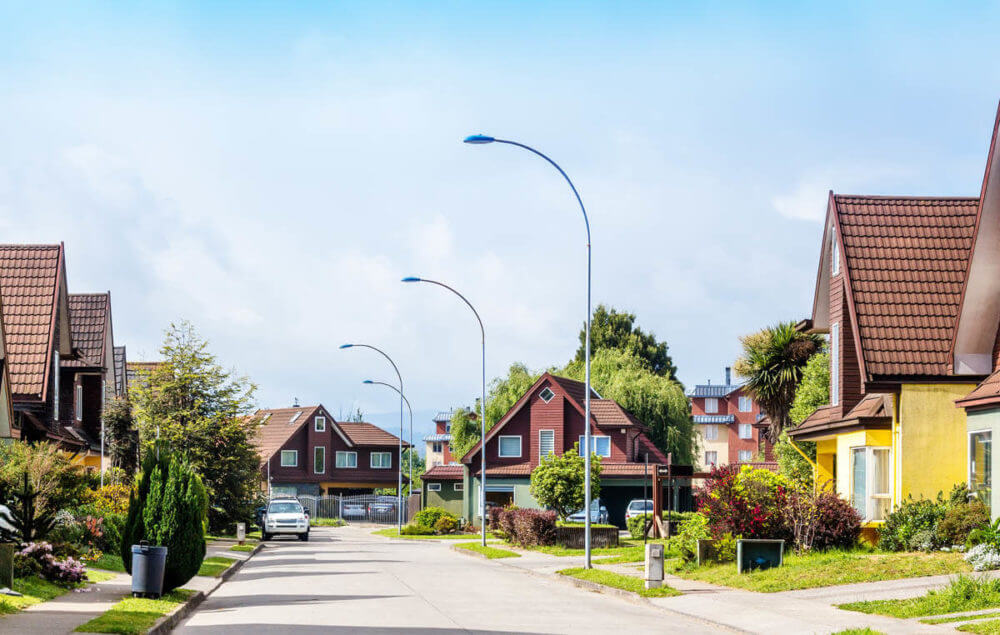The Ultimate Guide: How to Find a Good Neighborhood for Your Next Home
When it comes to purchasing a new home, one of the most crucial factors to consider is the area in which it is located. Figuring out how to find a good neighborhood can be a difficult task, as it requires careful evaluation of various aspects. Here is everything you need to know about the process so you can make an informed decision.

When choosing a neighborhood, consider safety, amenities, schools, transportation, community vibe, affordability, and future outlook. Research crime rates, access online resources, talk to residents and evaluate infrastructure. Prioritize proximity to amenities and quality schools. Assess transportation options and be aware of signs of gentrification or upcoming development. Seek a sense of community and belonging during visits. Balance affordability with your needs and consider long-term investment potential.
How to Find a Good Neighborhood – Start by Defining Your Needs and Preferences
If you want to find good neighborhoods, it is essential to start by defining your needs and preferences. Take some time to reflect on what matters most to you and what you envision in your ideal living environment. Consider factors such as your lifestyle, priorities, and long-term goals.
Are you looking for a quiet suburban area or a bustling urban community? Do you prefer a family-friendly area with good schools and parks, or do you prioritize proximity to entertainment and cultural activities? By clarifying your needs and preferences, you can narrow down your options and focus your search on locations that align with your vision of an ideal home.
Assess Your Lifestyle and Priorities
Take into account various aspects such as proximity to work, schools, amenities, safety, and transportation. If you have a daily commute, consider how far you are willing to travel and what transportation options are available. Evaluate the quality of schools in the area if you are moving with children or are planning to start a family.
Assess the availability of essential amenities like grocery stores, healthcare facilities, parks, and recreational areas based on your interests and hobbies. By understanding your lifestyle and priorities, you can prioritize neighborhoods that offer the convenience and resources that are important to you.
Identify Desired Neighborhood Characteristics
To further refine your search, it is essential to identify the specific characteristics you desire in an area. Think about the community vibe you’re seeking – whether you prefer a tight-knit community or a more diverse and cosmopolitan environment.
Consider access to parks, restaurants, shopping centers, cultural activities, and other amenities that align with your interests. Evaluate the overall infrastructure and the quality of public services available.
Determine Your Budget and Affordability
Another crucial factor is determining your moving budget. Consider the cost of living in different neighborhoods, as expenses can vary significantly from one area to another. You can compare the cost of living in different places on sites like Numbeo.
Research property prices, rental costs, utility expenses, and property taxes in various places to understand what you can comfortably afford. It’s important to strike a balance between your desired location characteristics and your financial capabilities. Assess your long-term financial goals and ensure that the area you choose aligns with your budgetary constraints.

Research Potential Neighborhoods
Once you clearly understand your needs and preferences, it’s time to research potential neighborhoods that align with your criteria. Thorough research will provide you with valuable insights and help you make an informed decision.
Utilize Online Resources
One of the most convenient ways to gather information about neighborhoods when house-hunting is by utilizing online resources. Real estate websites often offer detailed area profiles, providing data on factors like crime rates, schools, amenities, and housing prices.
These platforms allow you to explore different neighborhoods from the comfort of your own home, enabling you to narrow down your options based on your preferences. Additionally, guides and local forums can provide firsthand accounts and experiences shared by residents, offering a more personal perspective on what it’s like to live in a particular area.
Seek Recommendations and Local Insights
While online resources can be a valuable starting point, it’s also important to seek recommendations and local insights from people who have firsthand knowledge of the neighborhoods you are considering. Talk to friends, colleagues, or acquaintances who live in or have lived in the areas you’re interested in.
They can provide valuable insights into the pros and cons of different neighborhoods, offering a more authentic and nuanced perspective. Their experiences can help you gain a better understanding of the community dynamics, local amenities, and overall quality of life in each area.
Visit and Explore Neighborhoods in Person
While virtual research provides valuable information, there’s no substitute for visiting and exploring potential neighborhoods in person. Plan visits to the neighborhoods on your shortlist and spend time immersing yourself in the surroundings. Observe the overall appeal of the area, paying attention to factors such as cleanliness, maintenance of properties, and the general ambiance.
Take note of safety measures and assess the walkability of the area, considering factors like sidewalks, parks, and pedestrian-friendly infrastructure. Exploring the area on foot or by driving around will give you a sense of the community’s atmosphere and whether it aligns with your expectations.

Assess Neighborhood Safety and Security
When searching for a new place to call home, an essential step is to thoroughly assess its safety and security. By considering multiple factors, you can make an informed decision about the overall safety of a prospective area. One important aspect of evaluating the safety of an area is researching crime rates and trends.
Access reliable sources that provide accurate and up-to-date crime statistics for the areas you are considering. Understanding the prevalence of crimes like theft, burglary, or violent incidents can help you gauge the overall safety level of a neighborhood. Analyze crime trends over time to determine if the area has experienced significant changes in safety.
Ensure You Can Feel Safe in This Area
Infrastructure and safety measures play a crucial role in ensuring security. Evaluate factors such as well-lit streets, the presence of security systems, and neighborhood watch programs. Well-lit streets deter criminal activity and provide a sense of security during nighttime hours. The presence of security systems, such as surveillance cameras or gated entrances, can enhance safety measures.
While statistics and infrastructure provide valuable insights, personal comfort, and instincts also play a significant role in assessing safety. Pay attention to the general feel and perception of safety in the community during visits or interactions with residents. Trust your instincts and evaluate whether you feel comfortable and secure in the area. Observe if residents exhibit a sense of pride and take care of their properties, which can indicate a safe and tightly-knit community.

Evaluate Amenities and Services
When assessing potential neighborhoods, it’s essential to evaluate the availability of amenities and services that will cater to your daily needs and enhance your quality of life. Explore the nearby amenities to ensure convenience and accessibility. Proximity to grocery stores ensures easy access to fresh produce and household necessities.
The availability of healthcare facilities such as hospitals, clinics, and pharmacies is vital for prompt medical attention. The presence of parks and recreational areas provides opportunities for outdoor activities and leisure. Additionally, consider other desired amenities such as shopping centers, restaurants, libraries, and cultural institutions that align with your interests and preferences.
Educational opportunities are also key factors to consider, especially if you have children or plan to start a family. Evaluate the availability and quality of schools and educational institutions in the area. Research their academic performance, extracurricular activities, and the overall learning environment they offer. Access to reputable schools can contribute to your children’s education and future prospects.
Research the Public Transportation System
Transportation options play a significant role in the convenience and accessibility of neighborhoods. Assess the availability of public transportation, such as buses, trains, or subways, which can ease commuting to work or other destinations, especially if you don’t want to hire a car shipping company to transport your car.
Consider the efficiency and reliability of the transportation system in the area. Additionally, evaluate the road networks and proximity to major highways or airports, especially if you frequently travel or require easy access to transportation hubs.

Hire Long Distance Movers to Handle the Logistics While You Are Looking for a New Home
Relocating to a new home, especially over long distances, can be a complex and time-consuming process. To alleviate the burden and allow yourself more time to move and focus on finding the perfect new home, consider hiring cross-country movers to handle the logistics of your long-distance move.
Professional long-distance moving services specializing in cross-country moving have the expertise, experience, and resources to efficiently handle the transportation of your belongings. Their packing services, and safe and secure transportation with a professional moving truck, guarantee a stress-free relocation.
By entrusting the logistics to a professional auto transport company, you can dedicate your energy to exploring neighborhoods, visiting potential homes, and making the best decision for your new living environment. Hiring a long-distance moving company can provide peace of mind, save you valuable time and effort, and allow you to prioritize the crucial task of finding a new home.
Auto-Transport
If your first concern is having your vehicle transported safely and efficiently, enclose shipping is the way to go.
Read moreMoving Insurance
Flat Price Moving and Auto Transport Company offers moving insurance to cover potential damages
Read moreStorage Service
Knowing what kind of surprises cross country move may hold, we offer 30 day free storage for belongings at the origin state.
Read moreFollow Our Tips, and Your New Location Will Be Everything You Need
Follow our moving tips and guidelines on how to find the right neighborhood to live in, and you’ll be well-equipped to find a new location that meets all your needs and preferences. Remember, finding the perfect place and deciding where to live requires time, effort, and careful consideration.
By hiring professionals to help you out, you can avoid relocation mistakes, have more time to focus on exploring your future home and surroundings, and have an overall efficient move. So, make sure to contact us at Flat Price Auto Transport and Moving Company and allow us to make your move easier and have a hassle-free experience.
FAQ
What Factors Should I Consider When Choosing a Neighborhood for My Next Home?
When choosing neighborhoods for your next home, important factors to consider include safety, proximity to amenities and services, quality of schools and educational institutions, transportation options, the future outlook of the area, signs of gentrification or upcoming development, the community vibe, and sense of belonging, affordability, and the overall quality of schools and educational opportunities in the area.
How Do I Assess the Safety of a Neighborhood?
To assess the safety of an area, you can research crime rates and trends, evaluate the presence of safety measures and infrastructure, and consider your personal perception of safety based on your visits and interactions within the area.
What Resources Can I Use to Research and Gather Information About Prospective Neighborhoods?
You can use various resources to research and gather information about prospective neighborhoods, including online platforms, real estate websites, local guides, and forums, and talk to friends, colleagues, or current residents who have knowledge or experience of the area you are interested in.
How Important Is Proximity to Amenities and Services When Choosing a Neighborhood?
Proximity to amenities and services is highly important when choosing an area, as it affects convenience and accessibility in your daily life. Consider the distance to grocery stores, healthcare facilities, parks, recreational areas, shopping centers, restaurants, cultural activities, and other amenities that align with your needs and preferences.
Should I Prioritize Schools and Educational Institutions When Evaluating a Neighborhood?
Yes, prioritizing schools and educational institutions is important, especially if you have children or plan to start a family. Consider the availability, quality, and reputation of schools in the area to ensure your children have access to a good education.
How Do I Evaluate the Transportation Options in a Neighborhood?
To evaluate transportation options in the neighborhoods, consider the availability and convenience of public transportation, the efficiency and reliability of the transportation system, road networks, and the proximity to major highways or airports.
What Role Does the Future Outlook of a Neighborhood Play in My Decision-Making Process?
The future outlook of an area can play a significant role in your decision-making process. It indicates potential growth, development, or decline in the area, which can affect property values, amenities, and overall livability.
Are There Any Signs of Gentrification or Upcoming Development I Should Be Aware Of?
It’s important to be aware of signs of gentrification or upcoming development in an area, as they can impact the area’s character, affordability, and potential changes to the community.
How Do I Assess the Overall Community Vibe and Sense of Belonging in a Neighborhood?
To assess the overall community vibe and sense of belonging, you can talk to current residents, participate in community events or activities, visit local gathering places, and observe the general atmosphere and interactions among community members.
Can I Visit a Neighborhood Before Making a Decision? What Should I Look For During My Visit?
Yes, visiting an area before making a decision is highly recommended. During your visit, observe the cleanliness, upkeep of properties, safety measures, amenities, access to services, and the general appeal of the area. Pay attention to your comfort level and how you feel being in the surroundings.
How Do I Balance Affordability With Finding a Good Neighborhood?
When balancing affordability with finding good neighborhoods, consider your budget and the cost of living in different areas. Assess the trade-offs between the amenities, safety, proximity to services, and overall livability with the housing costs.
Should I Talk to Current Residents or Seek Local Insights When Researching a Neighborhood?
Yes, talking to current residents or seeking local insights can provide valuable firsthand knowledge about an area’s strengths, weaknesses, and nuances. They can provide insights into the community dynamics, amenities, safety, and overall living experience in the neighborhood.
Are There Any Red Flags or Warning Signs I Should Be Aware of When Evaluating a Neighborhood?
When evaluating neighborhoods, be aware of red flags or warning signs such as high crime rates, significant deterioration of properties, lack of basic amenities, limited access to services, inadequate infrastructure, or a general sense of neglect. These signs may indicate a less desirable area or potential challenges in terms of safety, livability, and future property value.
How Do I Assess the Quality of Schools and Educational Opportunities in a Neighborhood?
To assess the quality of schools and educational opportunities in an area, research their academic performance, extracurricular activities, available resources, teacher qualifications, and student outcomes. Look for information on school rankings, test scores, graduation rates, and parent or student reviews. Visiting schools or talking to parents and students can also provide valuable insights.
Should I Consider the Long-Term Investment Potential of a Neighborhood?
Considering the long-term investment potential of a neighborhood is important if you plan to stay or sell the property in the future. Factors such as infrastructure development, economic growth, demand for housing, and urban revitalization can impact property values and the potential for a solid return on investment over time.










